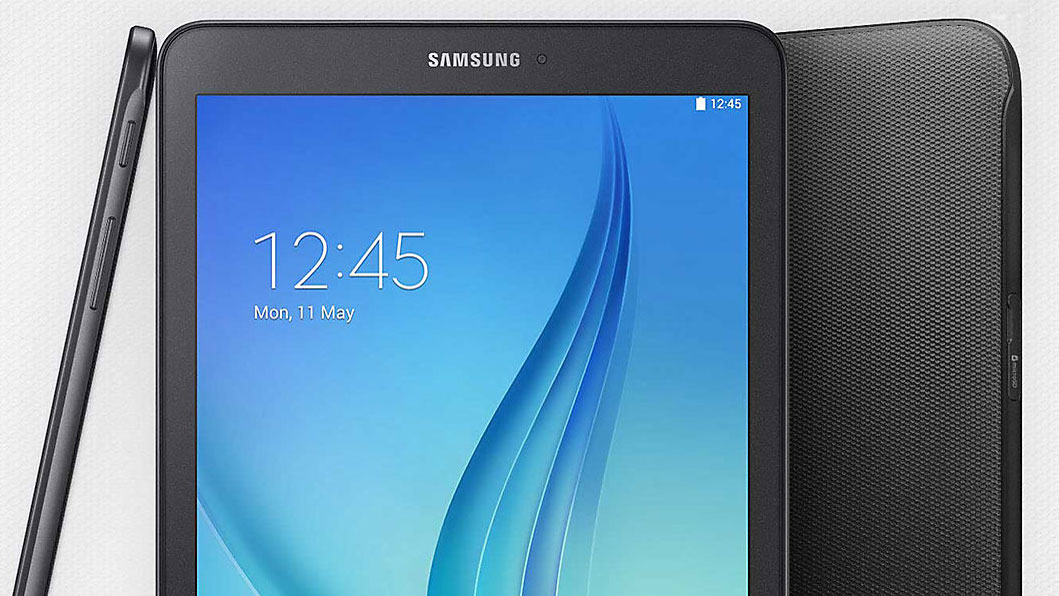Should I buy a Samsung Galaxy Tab E?



The bottom line: Tablets sell like hot cakes around Black Friday, and this temptingly priced slate from Samsung should appeal to those looking for a low-cost tablet for the family. It's not going to blow you away with powerful performance or a stand-out screen, but it'll do the basics and can keep the kids entertained without breaking the bank.
If you see it drop below $100/£100 we'd certainly recommend picking it up.
If you're looking for a device that can cope with running several apps at the same time, or one that comes with a decent (for a tablet) camera, you're better off looking elsewhere.
Pros: SD slot for additional memory space, affordable
Cons: older chipset and low RAM = low power
Galaxy Tab E: everything you need to know
The first thing you need to know when buying a Samsung Galaxy Tab E is which model are you looking at?
There are two versions of the Galaxy Tab E. The original is the 9.7-inch tablet which launched in July 2015, while a smaller 8-inch variant arrived in January 2016.
Weight: 490g
Dimensions: 241.9 x 149.5 x 8.5mm
Screen size: 9.6-inch
Screen resolution: 1280 x 800
Chipset: 1.3Ghz quad-core
RAM: 1.5GB
Storage: 16GB
MicroSD: Yes
Rear camera: 5MP
Front camera: 2MP
Battery: 5,000mAh
Released: July 2015
Apart from the screen sizes of the tablets, there's not a huge difference between the two tablets in terms of specs - so decide which screen size you want.
The 9.7-inch display will give you more space for your apps, but it has the same 1280 x 800 resolution as the 8-inch tablet - which means the latter will offer up a sharper screen.
With a 1.3Ghz quad-core processor and 1.5GB of RAM in both Galaxy Tab E tablets, you’re looking at devices that should easily cope with everyday tasks, from running games and playing films to browsing the internet and opening documents.
If you have a couple of other apps running in the background, reviews suggest this shouldn't slow things down too much. Anything more, however and you'll see the Galaxy Tab E struggle.
The 9.7-inch Galaxy Tab E comes with just 8GB of internal storage, and if you don't want to invest in a memory card you’ll have to be choosy about which apps you have on the device, especially when the average film will take up about 2GB.
However, if you don't mind forking out for an SD card you can expand your storage up to a generous 128GB.
Things are a little better with the Galaxy Tab E 8.0, as it comes with 16GB inside plus a microSD slot supporting cards up to 256GB in size.
Weight: 360g
Dimensions: 212.1 x 126.1 x 8.9mm
Screen size: 8-inch
Screen resolution: 1280 x 800
Chipset: Snapdragon 410
RAM: 1.5GB
Storage: 16GB
MicroSD: Yes
Rear camera: 5MP
Front camera: 2MP
Battery: 5,000mAh
Released: January 2016
Design
The 9.6-inch, 1280 x 800-resolution display is big enough and clear enough for watching films and playing games with a clear picture.
The tablet is a sleek 8.5mm thin, although weighing in at 490g it's fairly heavy. There's a non-slip rear casing designed to ensure a secure and comfortable hold.
Other features
There’s a 5-megapixel camera on the rear and a 2-megapixel snapper the front, although if you've got a half-decent phone camera you won't be taking many pictures with your tablet.
Split screen mode will enable you to use two apps at the same time, while if you're buying this for a young person, parents can block unsuitable apps, monitor their child’s activity and set time limits on usage. In terms of battery life, you're looking at around eight hours.
Sign up for breaking news, reviews, opinion, top tech deals, and more.

TechRadar's former Global Managing Editor, John has been a technology journalist for more than a decade, and over the years has built up a vast knowledge of the tech industry. He’s interviewed CEOs from some of the world’s biggest tech firms, visited their HQs, and appeared on live TV and radio, including Sky News, BBC News, BBC World News, Al Jazeera, LBC, and BBC Radio 4.